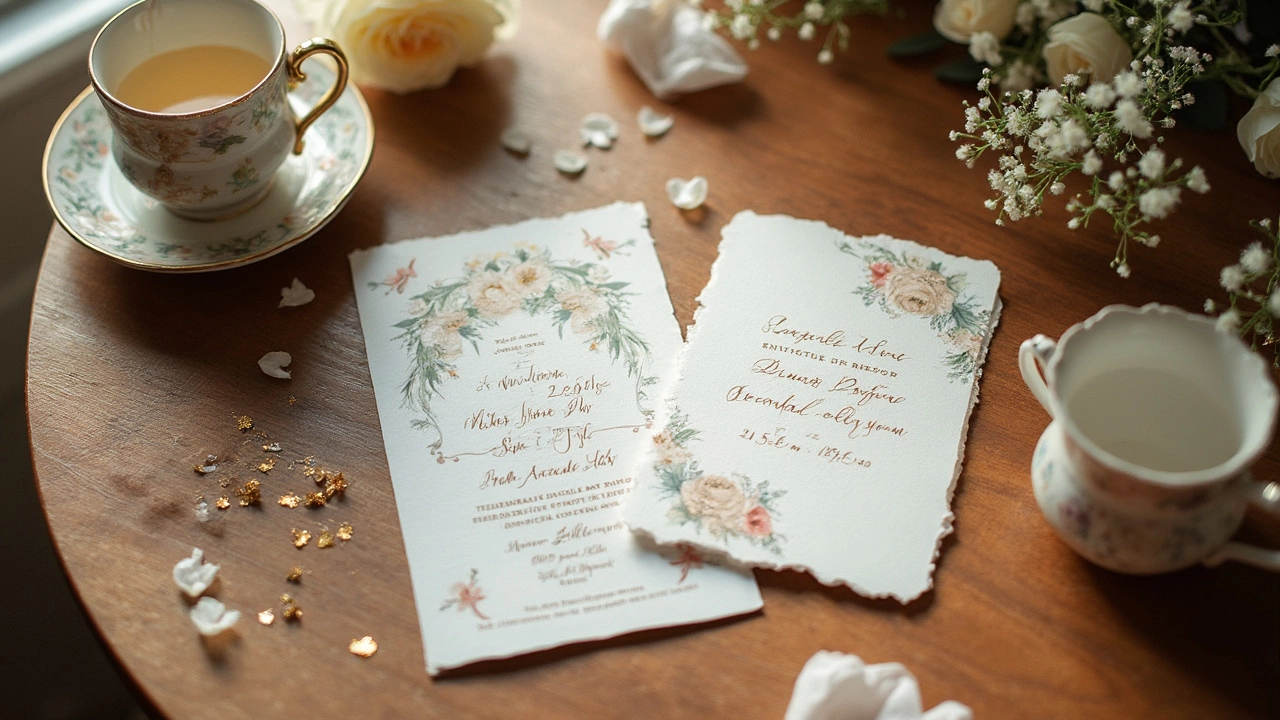Card Finish Guide: Choose the Perfect Wedding Invitation Finish
When you open a wedding invitation, the first thing you notice is how it feels in your hand. That feeling comes from the card finish – the coating or texture applied after printing. A great finish can make a simple design look luxe, while the wrong choice can feel cheap or get damaged easily. Below you’ll find the most common finishes, what they’re best for, and how to decide which one fits your style and budget.
Popular Card Finishes
Matte coating gives a smooth, non‑shiny surface. It’s great for modern, minimalist invites because it hides fingerprints and reads well under most lighting. If you like a soft, elegant look, matte is a safe bet.
Gloss coating adds shine and makes colors pop. It works well with bold graphics or vibrant palettes. The downside is that it can show smudges, so you’ll need to handle the cards carefully.
Spot UV applies a clear gloss to specific areas, like a monogram or floral motif. This creates a subtle contrast that catches the eye without coating the whole card. Spot UV is perfect when you want a hint of sparkle without going overboard.
Foil stamping transfers a thin metal layer onto the paper. Gold, silver, rose gold, and even copper are popular choices. Foil adds instant luxury and works best on darker cardstock where the metal stands out. It’s a bit pricier, but the effect is noticeable.
Embossing and debossing press the paper to create a raised (emboss) or recessed (deboss) design. No ink is needed – the texture alone tells the story. This finish feels sophisticated and pairs nicely with matte or linen paper.
Linen or textured paper isn’t a coating, but the built‑in texture acts as a finish. It adds a tactile element that feels like quality fabric. It’s ideal for rustic or vintage themes.
How to Pick the Right Finish
First, think about your wedding vibe. A beach ceremony with pastel tones usually looks best with matte or linen finishes, while a formal ballroom event can handle foil and glossy details.
Second, consider durability. If you’re sending invites overseas, a matte or linen finish resists smudges and moisture better than glossy or foil.
Third, look at your budget. Matte coating is the cheapest, followed by gloss. Foil stamping, spot UV, and embossing add cost per card, so order a small test batch to see if the impact justifies the price.
Fourth, match the finish to your design. Heavy, dark artwork can get lost under a glossy coat, while light designs shine with it. Spot UV works well to highlight a logo or initials without overwhelming the whole layout.
Finally, ask your printer for samples. Seeing and feeling the finish in person is the fastest way to know if it meets your expectations.In short, the right card finish turns a simple invite into a memorable first impression. Choose a finish that matches your wedding theme, protects the card during delivery, and fits your budget. With the options above, you’ll be able to pick a finish that makes your guests feel special the moment they open the envelope.

- Jun, 18 2025
- Comments 0